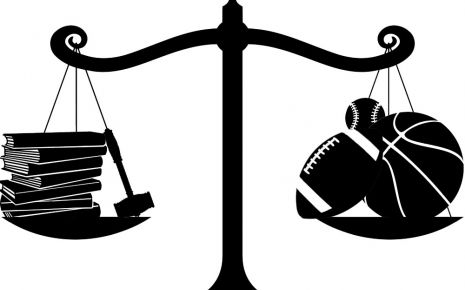A Study On Indian Copyright Law With Special Reference To Cinematograph Film Industry
"Cinema constantly remakes itself, but whether this is understood as
homage, imitation or theft depends upon historically specific technologies such
as copyright law and authorship, film reviewing and exhibition practices."
The world today has entered into an era of instant technology. A person sitting in the remotest corner of India can enjoy live performance taking place in faraway places like America or Africa, thanks to electronic (parallel) media. With the advent of the Internet, YouTube, Torrents, and other such platforms, today's audience is exposed to the latest technologies and filmmaking styles from across the globe, resulting in their expectations soaring to new heights. While all these have made technology among people more effective and efficient both in terms of time and cost and at the same time they pose the greatest threat to the copyright world.
However, this growth has also seen an increase in violation of IP rights, infringement of copyright, and disputes over ownership of content despite the existence of the Digital Millennium Copyright Act since 1998. Even though we have a strong judicial system as our backbone, the legal framework needs improvement and modification. Legal concerns and issues of the Indian film industry are too diverse and various forms of violation of IP rights often remain a major point of debate and discussion.
Importance of Study
The Indian film industry has shown tremendous growth and it is expected to grow even more in the coming years hence in order to build awareness about the importance of copyright in the making of films, it is very important to keep intact and uphold the element of creativity which acts as the basic function in the industry and it becomes essential that there should be certain strong laws to safeguard the originality and creativity, This is where Copyright laws become more important as the sole guardian of one's indigenous and creative work so that the industry can function smoothly.
Hypothesis
The major reason behind the growth in the film industry is undoubtedly the creativity in content, it is quite often said that "Content is the King". The whole industry is based on this element of creativity for which it can feel proud, but this element has to be protected in a very strict sense Thus, in order to protect the creativity certain changes as to be brought and this hypothesis will be proven by emphasis on the following points.
Research Questions
To make a detailed critical study of the issue, this paper primarily employs the Doctrinal method and presents a picture of the present scenario and the widely discussed matters and issues related to the field and how it is assuming the shape of a big problem in the Indian film industry.
As part of the Secondary Data Analysis, this paper employs books journals articles Case Study Methods for presenting some of the most befitting cases which amply demonstrate the seriousness of the issue and the various ways it is posing a significant challenge to the Indian industry
Scope and limitation
The Copyright Act, of 1957 protects original literary, dramatic, musical, and artistic works and cinematograph films and sound recordings. Films are considered an important art form with social, cultural, and economic impact. They are basically collaborative works, fusing the creativity and effort of multiple collaborators such as scriptwriters, actors, directors, costume and set designers, music composers, editors,s, etc.
Copyright is present in all stages in the making of the film (development, financing, marketing, and distribution) and it is important that key players in the industry know what and how the various rights can be protected. Whether you are making a low-budget short film, a documentary, or a Hollywood blockbuster, we need to know about some important legal issues that can affect the industry.
Conclusion
Copyright does not protect the idea but it's manifestation of an idea. That it protects the way of expressing that particular Idea otherwise, every other work will be an infringing work of the previous one. The judiciary now has to step in and outline the criteria and requisites for copyright infringement.
What if a filmmaker culminates the plots of different movies in a single film? Is the quality which has been copied matter or the quantity? As what happened in the 'Baghi' case. It is important for the Judges as well that they should watch both the films which are in question of law as what happened in the case of 'Knockout'. Until and unless one watches the film how can he decide whether there is a copyright infringement or not?
It is difficult for the court to decide "who had copied whom" like in the case of 'Gajhini' which was a remake of its Tamil version was copied from Hollywood's 'Momento'. Now, the producer of Tamil Gajhini should not claim any right over the originality of their work since it is a copy of another. Shall courts should intervene and take Suo moto in such cases?
The issue of copyright infringement is addressed to the court but, is not often decided by the court. Concerned parties are more willing to settle the matter amicably outside the court of law. Deciding "what mounts as an original work" is more important. Now if we consider Partner (2009), a copy of Will Smith's Hitch' based on the fact that the story revolves around a simple guy and a matchmaker, should we not look over one of our own gems 'Chotti Si Baat' which starred Ashok Kumar and Amol Palekar in 1975? It revolves around the same story of a simple guy and a matchmaker
In this era of resistance and less access, it is impossible that comparisons won't be happening. It is inevitable and bound to happen. The key is to carefully observe that at what degree the work is dependable on the said copied work. In this era, two different works can have nexus, though, both may be original in their own sphere. It is common to decide whether a work is copied or not.
End-Notes:
The world today has entered into an era of instant technology. A person sitting in the remotest corner of India can enjoy live performance taking place in faraway places like America or Africa, thanks to electronic (parallel) media. With the advent of the Internet, YouTube, Torrents, and other such platforms, today's audience is exposed to the latest technologies and filmmaking styles from across the globe, resulting in their expectations soaring to new heights. While all these have made technology among people more effective and efficient both in terms of time and cost and at the same time they pose the greatest threat to the copyright world.
However, this growth has also seen an increase in violation of IP rights, infringement of copyright, and disputes over ownership of content despite the existence of the Digital Millennium Copyright Act since 1998. Even though we have a strong judicial system as our backbone, the legal framework needs improvement and modification. Legal concerns and issues of the Indian film industry are too diverse and various forms of violation of IP rights often remain a major point of debate and discussion.
Importance of Study
The Indian film industry has shown tremendous growth and it is expected to grow even more in the coming years hence in order to build awareness about the importance of copyright in the making of films, it is very important to keep intact and uphold the element of creativity which acts as the basic function in the industry and it becomes essential that there should be certain strong laws to safeguard the originality and creativity, This is where Copyright laws become more important as the sole guardian of one's indigenous and creative work so that the industry can function smoothly.
Hypothesis
The major reason behind the growth in the film industry is undoubtedly the creativity in content, it is quite often said that "Content is the King". The whole industry is based on this element of creativity for which it can feel proud, but this element has to be protected in a very strict sense Thus, in order to protect the creativity certain changes as to be brought and this hypothesis will be proven by emphasis on the following points.
- The existing copyright system is not extending protection to the cinematograph film industry in India.
- There are serious concerns expressed from the field to reset the copyright laws to strengthen the cinematograph film industry.
- Lack of knowledge about IP rights is also an issue, which draws the attention of stalk holders to be more conscience and their claims and support
Research Questions
- What are the legal issues relating to cinematograph film works in copyright?
- What are the key objects of copyrighted work in cinematograph film works?
- What is the scope of cinematograph film works under copyrighted law?
- What are the legal remedies in case of violation of cinematograph film works?
- To study the scope of cinematograph film works in the copyright act of 1957.
- To analyze the scope in law and concerning cases on the issue of exclusive rights in cinematograph film works.
- To study the ownership rights, assignment, and license through instances of cases in cinematography film work.
To make a detailed critical study of the issue, this paper primarily employs the Doctrinal method and presents a picture of the present scenario and the widely discussed matters and issues related to the field and how it is assuming the shape of a big problem in the Indian film industry.
As part of the Secondary Data Analysis, this paper employs books journals articles Case Study Methods for presenting some of the most befitting cases which amply demonstrate the seriousness of the issue and the various ways it is posing a significant challenge to the Indian industry
Scope and limitation
The Copyright Act, of 1957 protects original literary, dramatic, musical, and artistic works and cinematograph films and sound recordings. Films are considered an important art form with social, cultural, and economic impact. They are basically collaborative works, fusing the creativity and effort of multiple collaborators such as scriptwriters, actors, directors, costume and set designers, music composers, editors,s, etc.
Copyright is present in all stages in the making of the film (development, financing, marketing, and distribution) and it is important that key players in the industry know what and how the various rights can be protected. Whether you are making a low-budget short film, a documentary, or a Hollywood blockbuster, we need to know about some important legal issues that can affect the industry.
Conclusion
Copyright does not protect the idea but it's manifestation of an idea. That it protects the way of expressing that particular Idea otherwise, every other work will be an infringing work of the previous one. The judiciary now has to step in and outline the criteria and requisites for copyright infringement.
What if a filmmaker culminates the plots of different movies in a single film? Is the quality which has been copied matter or the quantity? As what happened in the 'Baghi' case. It is important for the Judges as well that they should watch both the films which are in question of law as what happened in the case of 'Knockout'. Until and unless one watches the film how can he decide whether there is a copyright infringement or not?
It is difficult for the court to decide "who had copied whom" like in the case of 'Gajhini' which was a remake of its Tamil version was copied from Hollywood's 'Momento'. Now, the producer of Tamil Gajhini should not claim any right over the originality of their work since it is a copy of another. Shall courts should intervene and take Suo moto in such cases?
The issue of copyright infringement is addressed to the court but, is not often decided by the court. Concerned parties are more willing to settle the matter amicably outside the court of law. Deciding "what mounts as an original work" is more important. Now if we consider Partner (2009), a copy of Will Smith's Hitch' based on the fact that the story revolves around a simple guy and a matchmaker, should we not look over one of our own gems 'Chotti Si Baat' which starred Ashok Kumar and Amol Palekar in 1975? It revolves around the same story of a simple guy and a matchmaker
In this era of resistance and less access, it is impossible that comparisons won't be happening. It is inevitable and bound to happen. The key is to carefully observe that at what degree the work is dependable on the said copied work. In this era, two different works can have nexus, though, both may be original in their own sphere. It is common to decide whether a work is copied or not.
End-Notes:
- Constantine Verevis, 'Film Remakes' (Edinburgh University Press, 2006)
- which was published on the Microsoft website by Bill Gates 1996
- Shruthi Sambamurthy,"Copyrights and films" available at http://www.legaleraonline.com/articles/copyrights-and-films-a-legal-view-point
- Copyright on cinematography film works, https://shodhganga.inflibnet.ac.in/bitstream/10603/199650/7/chapter%20-%205.pdf
Award Winning Article Is Written By: Ms.Karin Paul
Authentication No: MY350300968829-17-0523
Law Article in India
Legal Question & Answers
Lawyers in India - Search By City
LawArticles
How To File For Mutual Divorce In Delhi

How To File For Mutual Divorce In Delhi Mutual Consent Divorce is the Simplest Way to Obtain a D...
Increased Age For Girls Marriage

It is hoped that the Prohibition of Child Marriage (Amendment) Bill, 2021, which intends to inc...
Facade of Social Media

One may very easily get absorbed in the lives of others as one scrolls through a Facebook news ...
Section 482 CrPc - Quashing Of FIR: Guid...

The Inherent power under Section 482 in The Code Of Criminal Procedure, 1973 (37th Chapter of t...
The Uniform Civil Code (UCC) in India: A...

The Uniform Civil Code (UCC) is a concept that proposes the unification of personal laws across...
Role Of Artificial Intelligence In Legal...

Artificial intelligence (AI) is revolutionizing various sectors of the economy, and the legal i...









Please Drop Your Comments